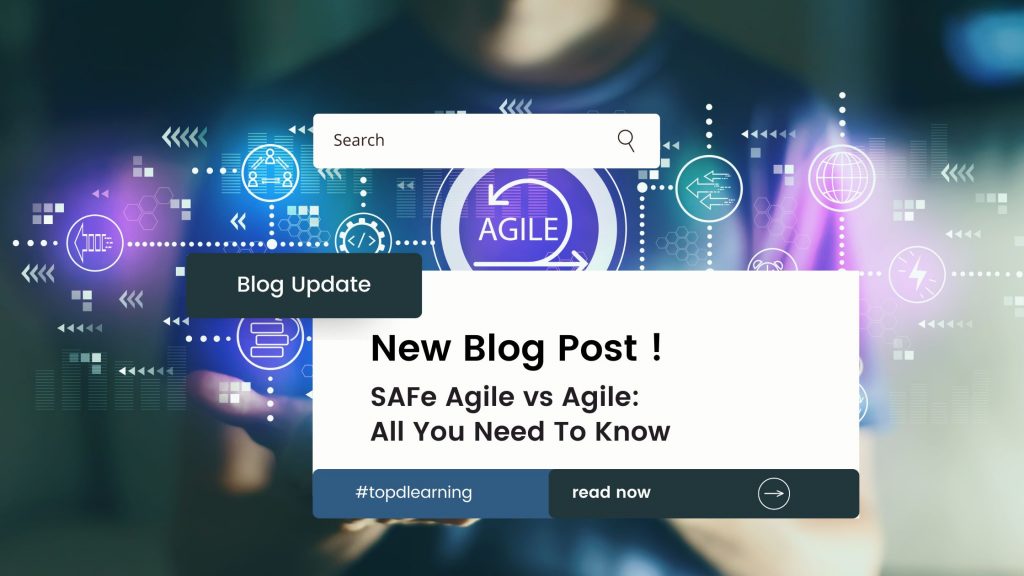Are you interested in implementing Agile practices in your organization but not sure where to start? Our blog post on SAFe Agile vs Agile can help you understand the differences between these two methodologies, and which one is best suited to your needs.
Whether you are an individual seeking to advance your career or an organization looking to improve your processes, TopD Learning offers comprehensive SAFe Agile and Agile certification training programs to help you achieve your goals. Contact us today to learn more and take the first step towards success.
Introduction
In the world of project management, there are numerous methodologies available to choose from, and it can be challenging to decide which one is the best fit for your organization. Two of the most popular frameworks are Agile and Scaled Agile Framework (SAFe®️) Agile.
While both are designed to develop high-quality products and services using iterative methods, there are significant differences between them. In this blog, we will explore the key principles of Agile and SAFe Agile, their advantages and disadvantages, and how to choose the right methodology for your organization.
Table of Content
- What is Agile?
- What is SAFe (Scaled Agile Framework)?
- Agile vs SAFe Agile
- Advantages & disadvantages of SAFe Agile
What is Agile?
Agile is an iterative and incremental approach to project management in a dynamic environment. It is based on the Agile Manifesto, which consists of four values and twelve principles. Agile processes are open to changing requirements and constant inputs and feedback from end-users, enabling teams to adapt to changing circumstances and deliver high-quality products and services.
The four values of Agile are:
1. Individuals and interactions over processes and tools: Agile recognizes that project management is a human activity and emphasizes the importance of communication and collaboration among team members.
2. Working software over comprehensive documentation: Agile emphasizes the importance of delivering a working product over documentation. While documentation is necessary, the focus is on producing a product that meets the customer’s needs.
3. Customer collaboration over contract negotiation: Agile involves the customer in the development process from start to finish. The customer provides feedback and direction, ensuring that the end product meets their needs.
4. Responding to change over following a plan: Agile processes are designed to be flexible and adaptable, responding to changing requirements and circumstances. While there is a plan, the focus is on delivering a quality product, not sticking to a rigid plan.
Agile is an excellent approach for start-ups and small teams as it provides autonomy and freedom, leading to increased job satisfaction. The iterative approach means that the team can quickly adjust the product to meet the customer’s needs, resulting in higher customer satisfaction. However, Agile may not be suitable for larger teams or complex projects, which require more structure and management.
What is SAFe (Scaled Agile Framework)?
The Scaled Agile Framework (SAFe®️) is a methodology designed to help larger organizations develop high-quality products and services quickly and efficiently. SAFe is an extension of Agile principles and incorporates Lean and DevOps practices. It provides a way to coordinate multiple teams and projects to deliver a cohesive product or service.
SAFe was developed in 2011 by Dean Leffingwell and is widely adopted in many industries, including software development, aerospace, and finance. SAFe provides a way to scale Agile practices to the enterprise level by breaking down silos and increasing collaboration among teams.
The SAFe framework consists of three levels: Team, Program, and Portfolio.
At the Team level, the focus is on developing a product or service incrementally. The team uses Agile practices, such as Scrum or Kanban, to deliver high-quality products quickly.
At the Program level, Agile Release Trains (ART) are used to synchronize multiple teams working on the same product or service. ARTs are a virtual organization of Agile teams that plan and work together on the same timeline to achieve the Value Stream goals.
At the Portfolio level, the focus is on aligning the product or service with the organization’s business strategy. The Portfolio level provides a way to manage investments, prioritize work, and govern the development process.
SAFe follows a set of guiding principles to improve efficiency, including:
- Taking an economic view of planning: Everyday decision-making must be done within an economic context, considering the project’s budget.
- Assuming variability in projects: Multiple requirements and design options are considered and then optimized for the best economic value.
- Decentralizing decision-making: Speedy process changes and a responsive feedback mechanism transpire when the people working closest to the process get to make decisions.
Agile vs SAFe Agile
| Agile | SAFe Agile | |
| Framework | Agile is a methodology built on the Agile Manifesto and emphasizes the four values of individuals and interactions, working software, customer collaboration, and responding to change. | SAFe Agile is a framework that extends the principles of Agile and incorporates Lean and DevOps practices to scale Agile up to the enterprise level. |
| Role of management | Agile values self-organizing teams and encourages leadership to support the team’s decision-making. | SAFe Agile includes management roles such as Portfolio Managers and Product Managers who oversee the enterprise’s financial, technical, and business aspects, and prioritize features of the product. |
| Team Organisation | Agile teams have no sub-teams or hierarchies and focus on completing small goals iteratively to create the end-product. | SAFe Agile uses Agile Release Trains (ARTs) which are virtual organizations of Agile teams that plan and work together on the same timeline to achieve the Value Stream goals. |
| Decision making | Agile encourages independent decision-making by the team members. | SAFe Agile allows decisions to be made at both the team and enterprise levels, depending on the scope of the issue. |
| Planning | Agile planning is done for shorter durations and is less complicated. | SAFe Agile planning and development cycles are longer and more complex due to its focus on the ‘big picture.’ |
| Ability to change | Agile is designed to be flexible and adapt to changing requirements, enabling products to be improved after each iteration. | SAFe Agile is also designed to be flexible but making changes can be more difficult due to the large scale. |
| Role of team members | Agile relies on the commitment and expertise of individual team members to work with dedication, which can sometimes lead to missed deadlines. | SAFe Agile involves established leadership roles that can ensure large-scale projects are completed with the development team’s involvement and top management. |
| Alignment with business goals | Agile’s bottom-up approach can lead to a focus on the development team’s tasks and a loss of sight on business objectives. | SAFe Agile’s top-down alignment and management involvement in strategic decision-making ensure business objectives are met. |
It is important to note that while there are differences between Agile and SAFe Agile, both frameworks are designed to achieve high-quality products and services using iterative methods. Choosing the methodology that best suits an organization’s needs requires an evaluation of their goals and the context in which they operate.
Advantages & disadvantages of SAFe Agile
SAFe Agile has several advantages and disadvantages that organizations should consider when deciding whether to adopt it.
Advantages of SAFe Agile:
1. Scalability: SAFe Agile is designed to scale Agile practices to the enterprise level by breaking down silos and increasing collaboration among teams. It provides a way to coordinate multiple teams and projects to deliver a cohesive product or service.
2. Alignment with business goals: SAFe Agile ensures that the product or service aligns with the organization’s business strategy. It provides a way to manage investments, prioritize work, and govern the development process.
3. Improved efficiency: SAFe Agile provides a way to handle large-scale projects with complicated issues while being able to work more effectively than traditional methods. The focus on the Value Stream ensures that work is prioritized based on its economic value.
4. Established management roles: SAFe Agile includes management roles that oversee the enterprise’s financial, technical, and business aspects, which can ensure that large-scale projects are completed with the development team’s involvement and top management.
Disadvantages of SAFe Agile:
1. Reduced autonomy: SAFe Agile’s focus on management and centralized decision-making can limit the autonomy of development teams. This can lead to a lack of ownership and engagement, which can affect the quality of the end product.
2. Complicated planning: SAFe Agile planning and development cycles are longer and more complex due to its focus on the ‘big picture.’ This can lead to slower delivery of products and services, especially in environments that require agility.
3. Administrative overhead: SAFe Agile has administrative layers that oversee multiple teams and projects, which can add overhead to the development process. This can lead to delays and slower feedback loops.
4. Limited flexibility: SAFe Agile is designed to handle large-scale projects, and making changes can be more difficult due to its administrative layers and focus on the Value Stream. This can lead to delays in responding to customer feedback and changes in the market.
In summary, SAFe Agile provides a way to scale Agile practices to the enterprise level, align work with business objectives, and handle large-scale projects effectively.
However, its focus on management and centralized decision-making can limit team autonomy, and its administrative overhead and complicated planning can slow down the delivery of products and services. Organizations should evaluate their needs carefully before deciding whether to adopt SAFe Agile.
Conclusion
In conclusion, choosing between SAFe Agile and Agile depends on an organization’s goals, context, and needs. Both methodologies have their strengths and weaknesses, and it’s important to evaluate them carefully to make an informed decision. While Agile is suitable for smaller teams and projects, SAFe Agile can help organizations scale Agile practices to the enterprise level and handle complex projects effectively.
At TopD Learning, we offer comprehensive SAFe Agile and Agile training and certification programs designed to help professionals and organizations achieve their goals. Our experienced trainers and coaches can guide you through the adoption process and provide the knowledge and skills needed to succeed in today’s fast-paced and dynamic business environment.
Contact us today to learn more about our training programs and how they can benefit your organization.
Frequently Asked Questions, Answered
- What is the main difference between Agile and SAFe Agile?
Agile is a methodology built on the Agile Manifesto, emphasizing values such as individuals and interactions, working software, customer collaboration, and responding to change. SAFe Agile is a framework that extends the principles of Agile and incorporates Lean and DevOps practices to scale Agile up to the enterprise level.
- Which one is better for small teams and projects, Agile or SAFe Agile?
Agile is a more suitable approach for small teams and projects as it focuses on iterative development and is less complicated than SAFe Agile. SAFe Agile is designed to handle large-scale projects and can add complexity to small teams.
- Does SAFe Agile require more management involvement than Agile?
Yes, SAFe Agile involves management roles such as Portfolio Managers and Product Managers who oversee the enterprise’s financial, technical, and business aspects, and prioritize features of the product. In contrast, Agile values self-organizing teams and encourages leadership to support the team’s decision-making.
- Which one is better for organizations that require flexibility and agility?
Both Agile and SAFe Agile are designed to be flexible and agile, but Agile is better suited for organizations that require more flexibility and adaptability as it is less complicated and has fewer administrative layers. SAFe Agile is better suited for larger organizations that require a more structured approach to manage complex projects.


